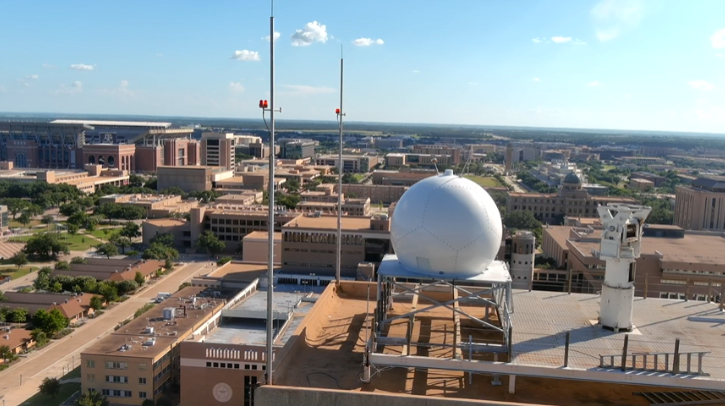Weather technology company Climavision has installed its X-band radar on top of Texas A&M University’s Eller O&M Building.
Bridging data gaps
Since the 1990s, the National Weather Service has monitored severe weather across Texas using Next Generation Weather Radar (NEXRAD) S-band radars. However, gaps can exist between these systems as the radar beam moves higher in the atmosphere the further it gets from the radar location. College Station sits more than 160km from the nearest NEXRADs in Houston and Austin, which left the university and the surrounding area exposed to weather phenomena that often happen in the lower atmosphere – such as flash flooding, sleet, ice and tornadoes.
In June 2024, however, a helicopter lifted Climavision’s latest X-band radar onto the Eller O&M Building on the Texas A&M campus, effectively closing this gap. The company will provide this critical real-time weather data to commercial clients in industries such as energy, aviation and media on a subscription basis. In addition, as part of a partnership with Texas A&M, the university’s atmospheric sciences department will have access to the radar for research and teaching purposes and the university emergency management department will have access for public safety planning and response – all at no cost to the school.
“Our partnership with Texas A&M is a win all around,” said Chris Goode, co-founder and CEO of Climavision. “Our clients have new visibility over a large part of Texas, the university’s teaching and research missions get a boost, and the entire Bryan/College Station community has a new layer of protection during dangerous weather.”
Climavision’s X-band radar network
The College Station radar joins five others that Climavision has already installed across the Lone Star State, with more on the way. The company is addressing other low-level gaps around the country and plans to have over 30 radars operational by the end of 2024, eventually scaling the network to more than 200 radar systems.
Climavision provides all of its radar data to the National Severe Storms Laboratory as part of a cooperative research and development agreement (CRADA). Some National Weather Service weather forecasting offices (WFOs) also have access to Climavision data through a National Mesonet Program (NMP) contract, providing additional visibility and decision support as they issue watches and warnings. Climavision hopes to continue expanding access to every WFO as radars come online.
In related news, Climavision recently installed a dual-polarization, X-band weather radar in Dry Ridge, Kentucky, to fill a low-level coverage gap along the I-75 and I-71 corridors connecting Cincinnati to Lexington and Louisville. Click here to read the full story.



